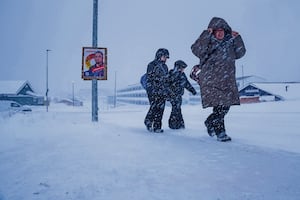Más Información

SESNSP reporta baja en delitos de alto impacto; resalta disminución de homicidio doloso en 26 estados

Tren Interoceánico: Sheinbaum pide celeridad a FGR tras descarrilamiento; no es necesario que víctimas se acerquen a abogados, insiste

Morena se deslinda de dichos de vocera de su partido en la CDMX; narco es uno de los principales empleadores en México, dijo

Tras 17 horas, autoridades venezolanas liberan a periodista mexicano Julián Mazoy; “por ahora estoy bien”, dice

Operativo “Cisne Negro”, túneles y una película frustrada; así narró EL UNIVERSAL la recaptura de “El Chapo” hace 10 años
Rafael Navarro González, a scientist from Mexico’s National Autonomous University (UNAM)
and NASA collaborator , was decorated by the American Geophysical Union (AGU) for his recent findings on Mars .
The American Geophysical Union is the most important geophysics organization in the world, consisting of over 62,000 members from 144 countries . This prestigious organization deemed Navarro González’s work “the best investigation in the fields of Earth sciences and space.”
“It is the largest scientific society in the world and has published numerous articles on earth sciences and space. The fact that my investigation has been chosen as one of the most important ones goes to show the impact it has had in the scientific community,” said the investigator.
His investigation, which was originally published on March 25 in the Journal of Geophysical Research , highlights the fundamental role of hydrogen in Mars’ climate. Since carbon dioxide is practically absent from the atmosphere, hydrogen produced by Martian volcanoes could have prevented the Red Planet from freezing, allowing water to flow freely in its surface.
Navarro González is also known for discovering soil with characteristics similar to the surface of Mars in Chile’s Atacama desert, for which he received international awards.
Since 2004 , he has been working with NASA to analyze and supervise data obtained from the Sample Analysis at Mars (SAM) laboratory, which is behind the exploration probes in Mars.
He has also helped redesign instruments that are being used by the robot Curiosity to search for organic molecules in the Martian planet.
dm
Noticias según tus intereses
[Publicidad]
[Publicidad]










